Critically look at how having a partner would alter your response to a defensive incident. “Partner” can mean any number of different people: spouse or significant other, a small child, or an elderly parent. Each type of partner can impose different considerations on your tactics, techniques and procedures.
Roles
There are three different roles involved in dealing with any defensive situation: action, security, and load. These roles are independent of alpha and beta status in the relationship. The action and security roles can rapidly switch back and forth between partners. Load will rarely move into the action or security role, but in some cases may support them.
Action Role
The action role is concerned with accomplishing routine tasks, such as driving, filling the car with gas, etc. In the event a situation begins to develop, this role handles confrontations with suspects and threats, either verbally or with weapons.
Security Role
The security role ensures that while routine tasks are being performed, the partner performing those tasks isn’t surprised by predators. If an incident unfolds, the security role ensures that other undesirables don’t menace our flank or rear. The security role also makes the initial contact/linkup with the authorities after an incident.
Load Role
The load role handles the items or issues we must deal with that don’t contribute to action or security. Examples are small children, parcels, or elderly/infirm persons with us.
When we train, we usually handle all three roles simultaneously. When we have a partner, we may be able to split or share responsibility for the roles. The load role can increase in the event of casualty or mobility issues. If the load role increases, Hick’s Law will definitely rear its ugly head, even more so in the absence of previous practice.
When agreeing upon roles, it is important to consider status within the relationship. Whether a person is the alpha or beta in a relationship is important to the fulfillment of role tasks. Relationships containing two alphas have to evaluate how they will handle a defensive incident. Ultimately, the phrase “lead, follow, or get out of the way” has to be considered, regardless of what individual partners consider their status in the relationship. Couples should also consider that status reversal could take place if, for instance, one partner becomes a casualty.

Partner Tactics
Consider your tactics in terms of the role they are a part of first. Then think about the techniques and procedures you will use to implement the tactics. For example, is your partner capable of contributing to the family protection effort? If so, what is that person capable of and comfortable with doing? If he or she is more suited, capability and mindset wise, of performing security tasks, then work on coordinating your efforts between the security and action/confrontation roles. Make partners’ roles and their associated tactics mutually supportive to gain an edge on any threat(s) you may encounter.
If your partner doesn’t want to carry a weapon but isn’t opposed to using one, consider carrying a secondary weapon for him or her. While this isn’t an optimal arrangement, it is better than that person being completely unarmed. There are training and practice aspects to such an arrangement, however. Awareness of muzzle direction becomes of prime importance any time someone else’s live weapon is accessed.
It’s also important for adult partners to know how to access each others’ tools. Tools include keys, phones, and weapons. Some couples do not know how to use each other’s cell phones. If a firearm is carried in a security holster, accessing the firearm by the other partner needs to be practiced. When a partner accesses the other’s weapon, muzzling the original carrier almost inevitably results. Therefore, the best way to practice this is with an inert gun.
Communication
Communication is an important part of the family protection process: before, during, and after an incident. This can be divided into communication within the group and with external parties. External parties can be suspects, threats, and the authorities.
Internal Communication
Internal communication has two components. One is communicating during the planning stage of family protection to ensure that all members understand what their roles are and what is expected of them. Second is communicating during the development and resolution phases of an incident.
An interactive approach should be used during the planning stage. This is the time for negotiating what will be done by whom. All parties must agree to the plan, even if it means less than optimal tactics are agreed upon. There should be some testing of acceptance and understanding.
Pre-established short phrases, code words, or visual signals should be used during an incident to convey maximum information with minimum possibility of misunderstanding or compromise. There should be phrases or words for alerts or to initiate immediate action drills. Some couples may choose to include duress phrases in their communication protocols as well.
External Communication
External communication is not to be taken for granted either. How to use your partner’s cell phone is probably not a skill best learned on the fly during an incident. The question of who will interact with the authorities in the event of an incident should be decided in advance. This is best done by the partner in the security role. Defusing the initial contact with police can prevent a victory from turning into a friendly fire tragedy. Some form of “stand down” signal by the security partner should be included in the training repertoire to indicate the arrival of the authorities or closure of the incident.
Practice Drills
There are a number of practice drills that can increase your ability to work effectively with a partner. Some can be undertaken alone, while others should be practiced in conjunction with a partner. Inert weapons are frequently the best way to practice interactive drills, though airsoft weapons are better for some drills. A good practice game for learning to use each other’s cell phones is to exchange phones and call each other. The first one through wins.
Moving With a Loaded Firearm
In my opinion, one of the most important skills for those carrying weapons is learning to move around others with a loaded unholstered firearm. Having a Negligent Discharge into a family member or oneself would be a personal and tactical disaster. Any armed person should master the ability to avert their muzzle unconsciously any time they move around another person. Further, the armed person needs to be able to do this without endangering themselves. This doesn’t have to be done with a loaded weapon or even a real weapon. Doing the drill with a laser-equipped inert gun is an excellent way to practice this.
One-Handed Shooting
In the age of two-handed shooting, one-handed shooting has become severely neglected. However, any parent could be carrying a child or grandchild when an incident occurs. To practice for this, consider using a large bag of cat litter to simulate having to access your firearm and shoot while encumbered with a child. At the very least, devoting a substantial portion of your live-fire and dry-fire practice to one-handed work is appropriate for all armed parents of small children. This PDN article on one-handed shooting is worth reviewing.
Working with others on any task can be difficult. In the context of a defensive encounter, it can become incredibly complicated. Planning and practicing ahead of time can make the situation much more manageable and the outcome more favorable.
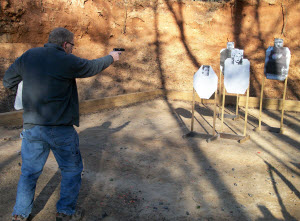

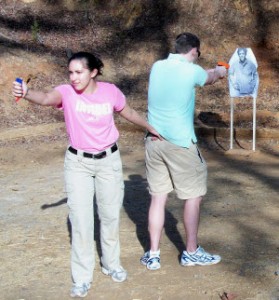
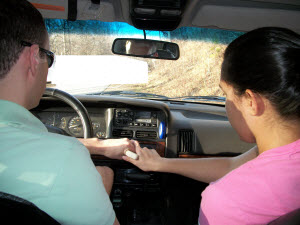
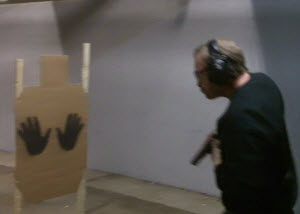
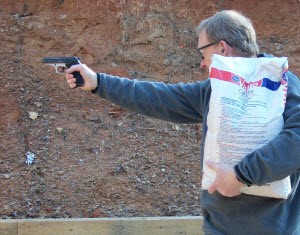
Great article! And timely, too, for me and lady. (OK, so we just found this piece years after it was posted...) We are taking a Partner Tactics course tomorrow and this gives us something to gauge that against. Looking forward to incorporating these ideas into our practice.
These are great articles, I am a 100% disabled veteran, I spent 23 years in the military, both in Special Forces and Airborne infantry units, and numerous combat tours around the globe, one shooting technique that I practice is side shooting, shooting latterly and kneel shooting, I practice these techniques due to less body mass presenting itself to an assaulter/attacker, as all shooting techniques it requires a lot of practice and is great when firing in tight spaces, or shooting around low objects. I enjoy all of your articles and watch them, as anything else, if you don't keep up with your training you loose some of your technique.